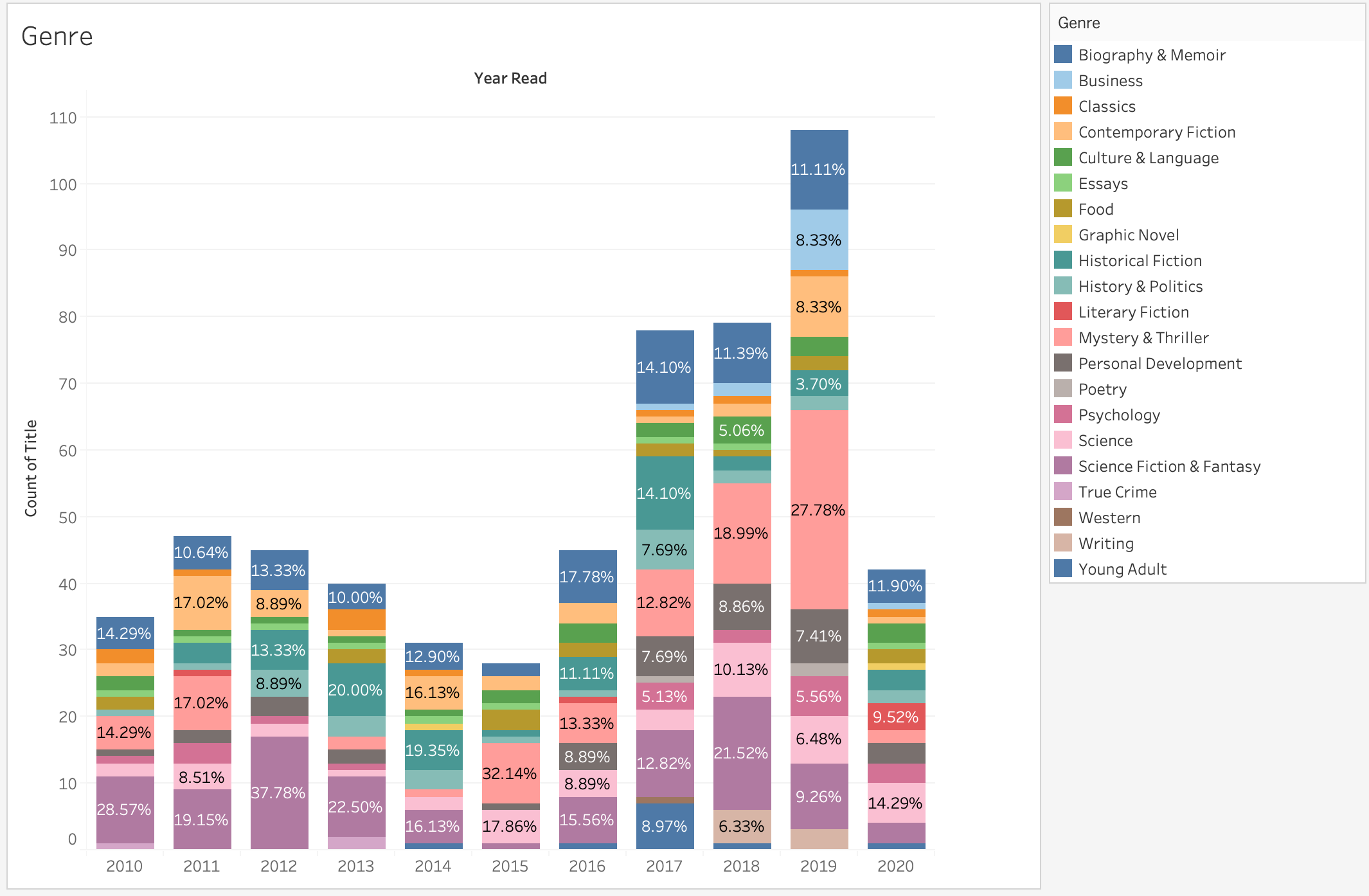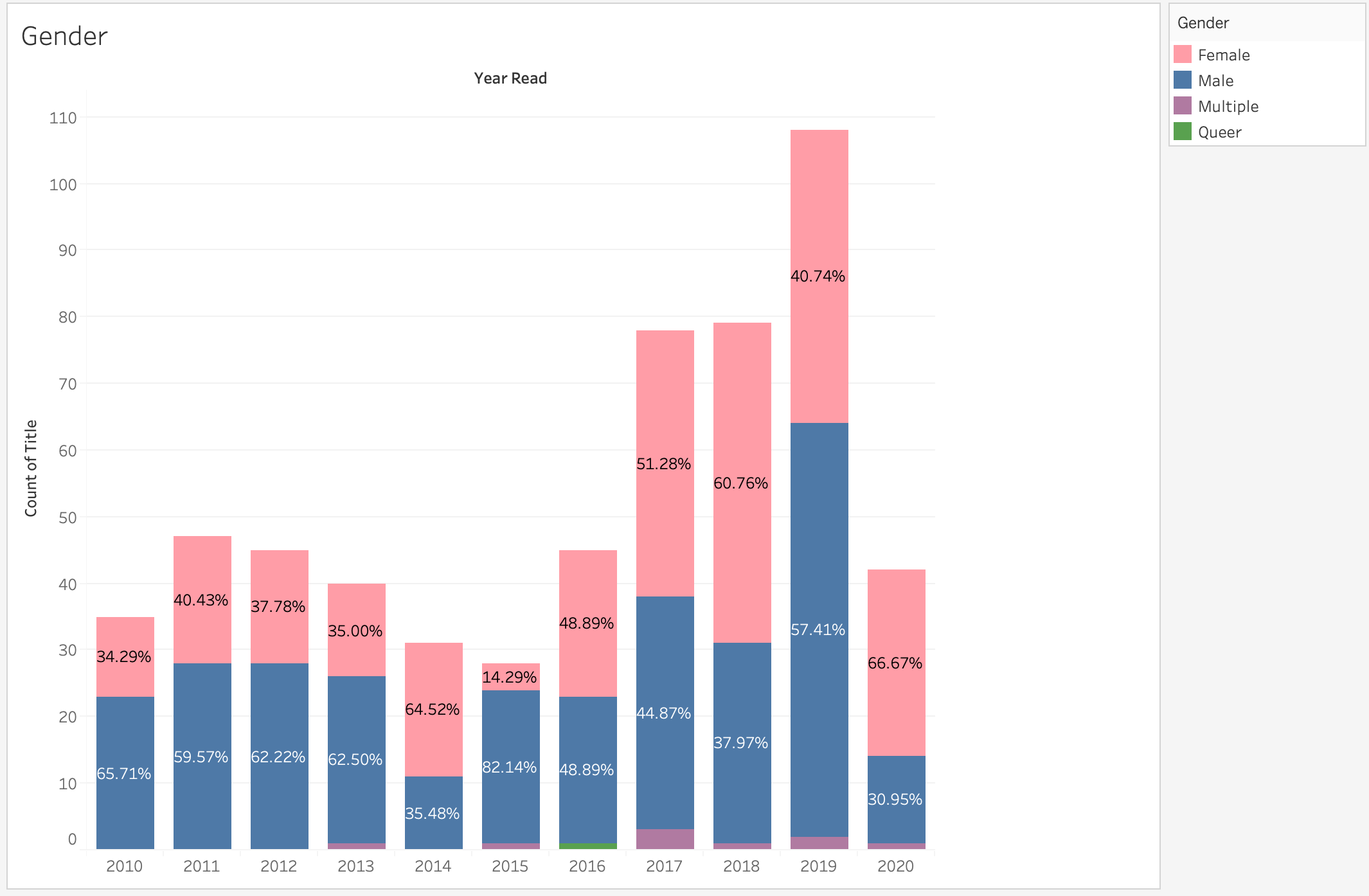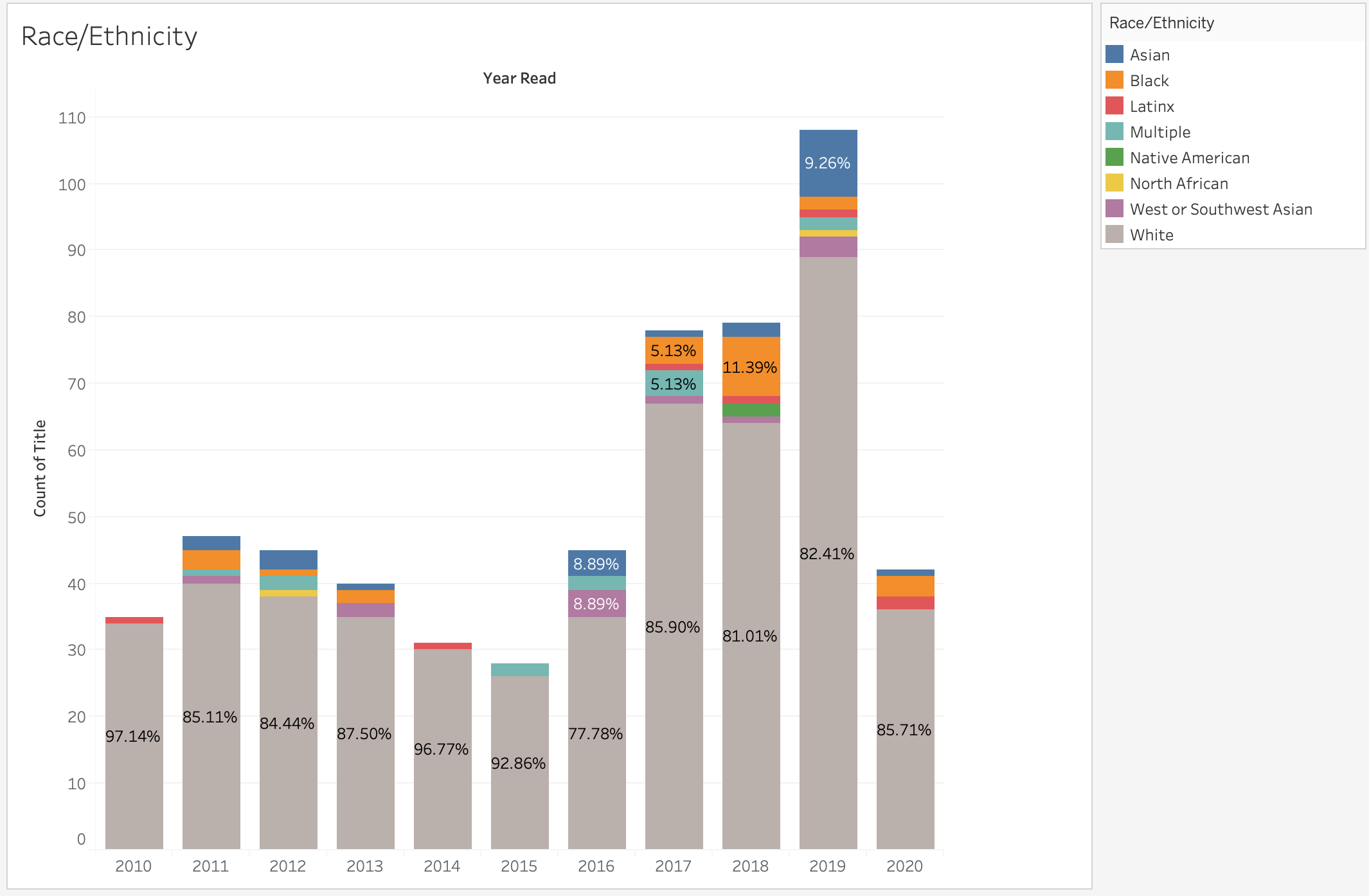10 Years of Reading Data
I’ve compiled 10 years of my reading data and made good faith guesses at understanding the authors’ preferred gender, race/ethnicity, and geographic country of origin. This exercise was not intended in any way to classify, categorize, or otherwise speak for the authors, but to gain insight into my own reading habits and how they reflect on the culture I live in. Here’s what I found…
I read broadly across many genres.
Most years, my reading is fairly evenly split across fiction and non-fiction. I read tons of “genre fiction” like science-fiction, fantasy, mysteries, and thrillers. I love memoirs and biographies, and popular books about science and psychology. I read exactly one or two works of classic literature a year. (Apparently, that’s about all I can take!)

I read men and women roughly equally.
Over the past 10 years, the share of non-male authors I’ve read varies between roughly 15% (by far the lowest year and a bit of an outlier) to 65%. In the most recent years, the share is 40-65%. I find it noteworthy that I’m not reading many books by authors who identify outside the gender binary–something I intend to change in the coming months.

85% of the books I read are authored by white people.
Pretty consistently, 80-95% of the books I read are authored by white people. In recent years, the trend is very stable at 80-85%. This is, perhaps, not surprising. The publishing industry is dominated by white cis women to the tune of 70-80%. (You can read more on that here.) Author statistics are much harder to come by, but I expect that the whiteness of the publishing industry is reflected in their choices of the authors they publish.

This is, of course, not at all reflective of the United States, which is estimated to be 60% white. There are two conclusions I draw from this: First, the publishing industry needs to publish more non-white authors. Second, I need to read more non-white authors. (Not just need as in, “This is a thing to do for the benefit of society.” Need as in, “I need more of this in my life!”)
I mostly read books from English-speaking, former British colonies.
I grouped together the following countries that are not geographically close to each other, but that do share important commonalities: the United States, Canada, the United Kingdom, Ireland, Australia, and New Zealand. These are represented by the clunky acronym “UCAN-UKIE-ANZ” below–the gray bars. They represent more than 90% of my reading.
This one was especially tricky because, to do this analysis, I had to look at author biographies and make a decision about which country best represented the country of origin for their book. This was particularly tricky for authors who are also immigrants and have close ties to multiple geographic regions. In the end, I decided to place them in the country to which they immigrated. This had the effect of increasing the percentage of my reading that comes from “English speaking, former British colonies.”

As in the section above, what I conclude from this is that there is, quite literally, an entire world of wonderful books that I am missing out on.
Conclusion
It’s not that I’m surprised by my own data. (After all, I’m the one that generated it!) But it is alarming and disappointing to see how easily I’ve fallen into the habit of reading books by authors that look like me (white, English-speaking). It wasn’t intentional, but that’s the thing about systemic racism: It doesn’t have anything to do with my intentions.
When the United States publishing industry (which is incredibly white) decides what books to publish and market (mostly books by white authors), then what’s available on the market and what gets marketed to me is going to be dominated by white authors from English speaking countries. Which means that if I simply read what’s available without thinking critically about it, that whiteness is going to be reflected in my reading habits. (And it is, obviously.)
So, what now? On a personal level, I read a lot, and this analysis shows me that I’ve been missing out on most of the literature available in the world. I’m excited to discover and enjoy new authors, especially ones who don’t already look and think like me.
On a macro-level, we need to push for sustained change in the publishing industry, and do better about supporting (with real money and resources) non-white authors. For me, that means reading and buying books by non-white authors, i.e. voting with my dollars. For more on pay disparities in publishing, you can search for #PublishingPaidMe.
